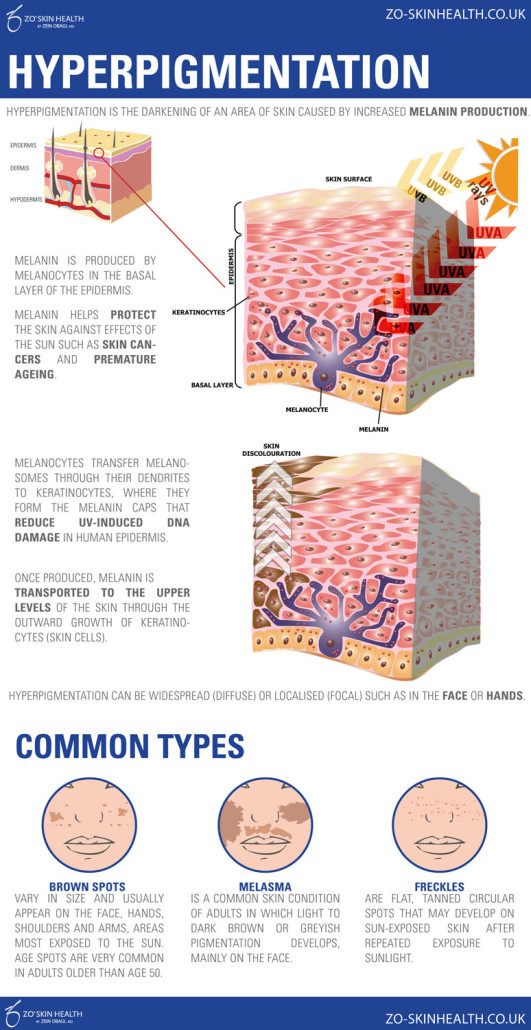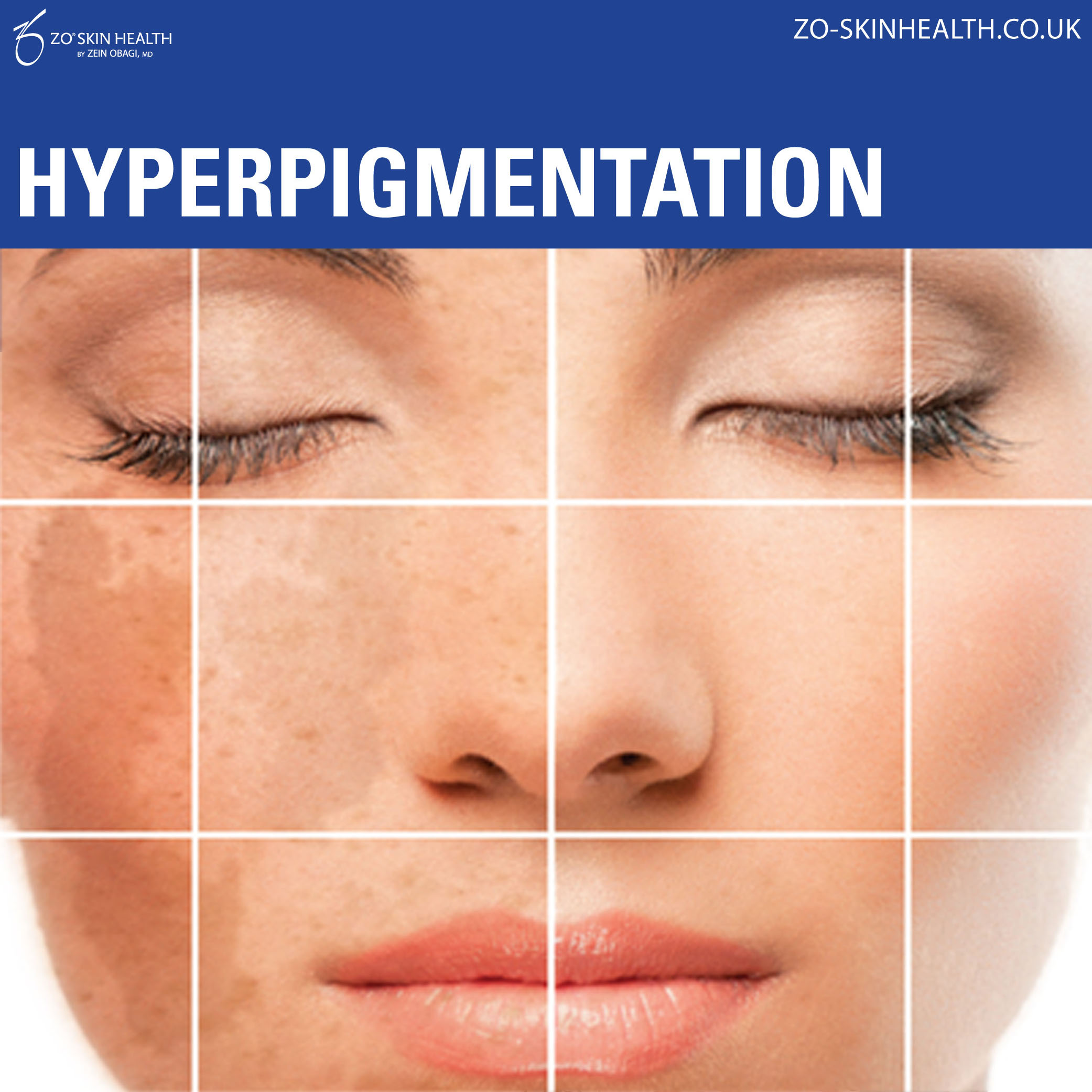Hyperpigmentation can spread to the entire surface of the skin, either affecting different areas or restricted to individual parts.
Human skin contains cells that produce melanin (melanocytes), a pigment that gives colour to the skin and helps protect the body from the sun’s ultraviolet rays. An overproduction of melanin leads to hyperpigmentation of the skin.
Types of hyperpigmentation
Hyperpigmentation includes many different forms.Freckles are small circular dark spots, focused on the face, shoulders, neck, torso and hands, more commonly found on people with fair skin and red or blond hair. They are present all year round on the face of these subjects but became more evident in the summer with exposure to sunlight.
Another form of freckle is solar lentigos, also known as liver spots, that are formed due to overexposure to radiation of the sun; it is more commonly called "sunspots skin".
The senile lentigo is formed by the accumulation of damage caused by sun exposure.
Another form of hyperpigmentation, rather severe, is melasma, caused by an intense and uneven accumulation of melanin. If the freckles are just small spots, melasma is a spot much more extensive and unsightly.
Finally there is the post-inflammatory hyperpigmentation that is formed in the presence of scars, burns, eczema and acne.
ZO Skin Health and Medical products and protocols are optimised to treat a wide range of skin disorders and chronic conditions including all forms of hyperpigmentation.
Causes, and how to get rid of hyperpigmentation

 By Krzysztof
By Krzysztof